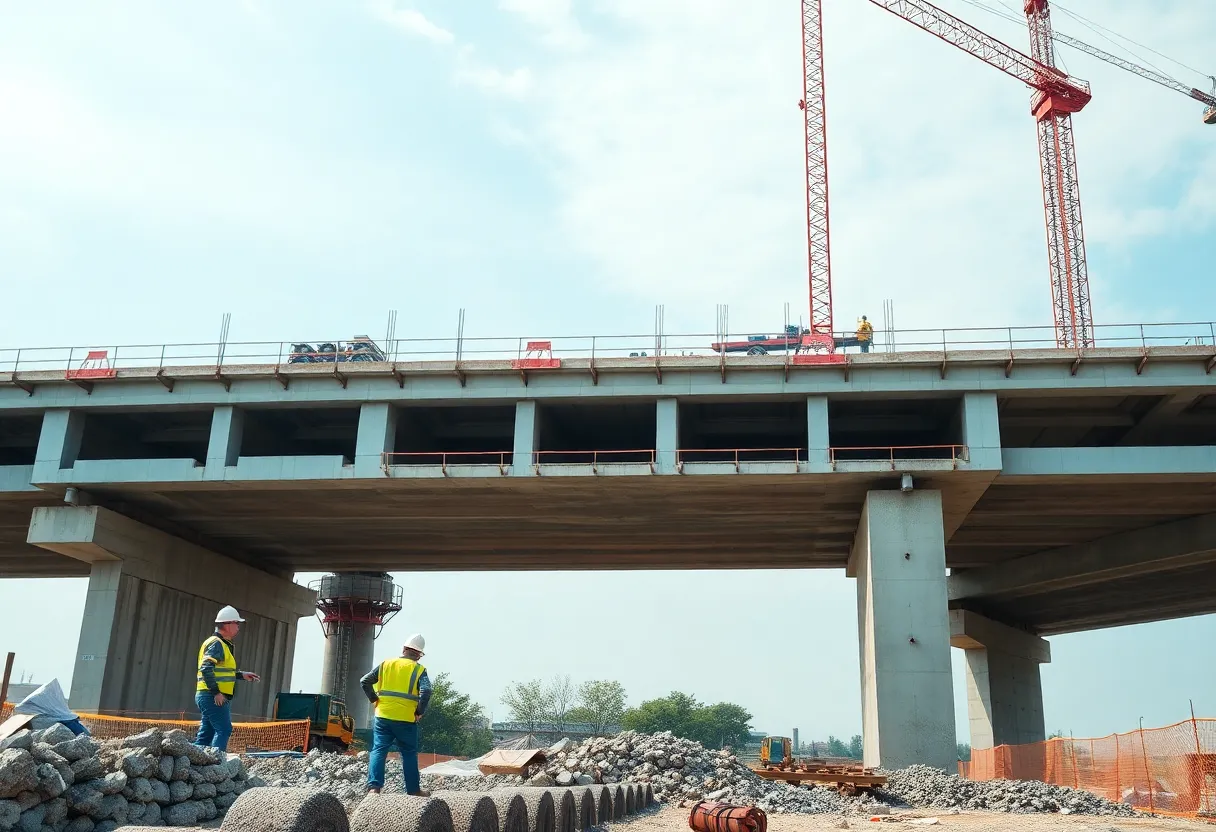News Summary
A recent study highlights the importance of monitoring construction control parameters in prestressed concrete continuous girder bridges. Conducted during the Shenyang Metro Line 3 project, the research shows that temperature variations and prestressing loss significantly impact bridge alignment and stress states. By employing finite element modeling, the study provides valuable insights that can help improve construction safety and quality, emphasizing the need for real-time monitoring and advanced technologies like BIM and IoT.
Shenyang – A recent study focusing on the construction of prestressed concrete continuous girder bridges emphasizes the critical need for detailed monitoring of construction control parameters. Using finite element modeling, the research investigates how various factors, such as concrete unit weight, elastic modulus, prestressing loss, shrinkage, creep, and temperature, can influence the alignment and stress states of bridges during construction.
The findings highlight that temperature variations and prestressing loss are the most significant factors affecting both bridge alignment and stress levels. In contrast, parameters like concrete elastic modulus and unit weight were determined to have minimal impact. With the rising trend of constructing prestressed concrete continuous girder bridges, which are valued for their structural integrity and cost-effectiveness, this research is particularly timely and relevant.
Conducted as part of the Shenyang Metro Line 3 project in China, the study involved real-time monitoring of the cantilever casting process from October 2023 to August 2024. It examined the key control parameters that often lead to discrepancies between actual and predicted structural performance during the complex cantilever construction stage. These discrepancies can arise from various influences, including construction errors, material properties, and ambient temperature.
The research employed a sophisticated finite element model that replicated the entire sequence of construction. This model simulated various stages, such as concrete pouring and the tensioning of prestressed steel strands, providing insights on how critical parameters interact throughout the process.
To further understand the implications of these parameters, a sensitivity analysis was carried out, assessing their influences on cumulative deflections and stresses both at maximum cantilever conditions and upon final completion. The analysis indicated that the impact of these parameters is more pronounced in the final state of the bridge than during the maximum cantilever phase.
As part of the study, a construction monitoring system was designed to evaluate stress, geometry, and temperature, thereby facilitating a comprehensive assessment of their effects on the structure. This system has established warning thresholds, with specifications such as a maximum allowable deflection difference of 25.73 mm and stress differences of 5.13 MPa and -9.26 MPa for the top and bottom slabs, respectively.
The researchers assert that prioritizing the monitoring of parameters with significant impacts on bridge alignment and stress is vital to ensure structural safety and integrity. This essential focus can help manage construction quality, particularly concerning the efficiency of prestressing equipment and temperature control operations during construction.
Additionally, the findings suggest that adopting technologies like Building Information Modeling (BIM) and the Internet of Things (IoT) could greatly enhance real-time monitoring and the calibration of critical construction parameters. Such advancements would allow for better management of the construction process and may contribute to preventing future discrepancies in bridge performance.
In conclusion, the study’s comprehensive approach underscores the importance of closely observing all monitored parameters during the construction of prestressed concrete continuous girder bridges. With construction patterns continually evolving, this significant body of research paves the way for improved methodologies and safety practices in bridge engineering.
Deeper Dive: News & Info About This Topic
HERE Resources
Additional Resources
- Nature: Construction Control Parameters
- Wikipedia: Bridge
- Chosun: North Korea News
- Google Search: Prestressed Concrete Bridges
- Wiley Online Library: Engineering Research
- Encyclopedia Britannica: Structural Engineering
- VOA News: China-North Korea Rail Link
- Google News: Construction Monitoring
- Smithsonian: Beautiful Bridges
- Google Scholar: Finite Element Modeling
Author: STAFF HERE LOS ANGELES WRITER
The LOS ANGELES STAFF WRITER represents the experienced team at HERELosAngeles.com, your go-to source for actionable local news and information in Los Angeles, Los Angeles County, and beyond, specializing in "news you can use" with coverage of product reviews for personal and business needs, local business directories, politics, real estate trends, neighborhood insights, and state news affecting the area—with deep expertise from years of dedicated reporting and strong community input, including local press releases and business updates, while delivering top reporting on high-value events like the Academy Awards, LA Auto Show, and Los Angeles Marathon, extending coverage to key organizations such as the Los Angeles Area Chamber of Commerce and the Los Angeles Tourism & Convention Board, plus leading businesses in entertainment and technology like Warner Bros. and SpaceX, and as part of the broader HERE network including HEREAnaheim.com , HERECostaMesa.com , HEREHuntingtonBeach.com , and HERESantaAna.com , providing comprehensive, credible insights into Southern California's dynamic landscape. HERE Anaheim HERE Beverly Hills HERE Coronado HERE Costa Mesa HERE Hollywood HERE Huntington Beach HERE Long Beach HERE Los Angeles HERE Mission Viejo HERE San Diego HERE Santa Ana





